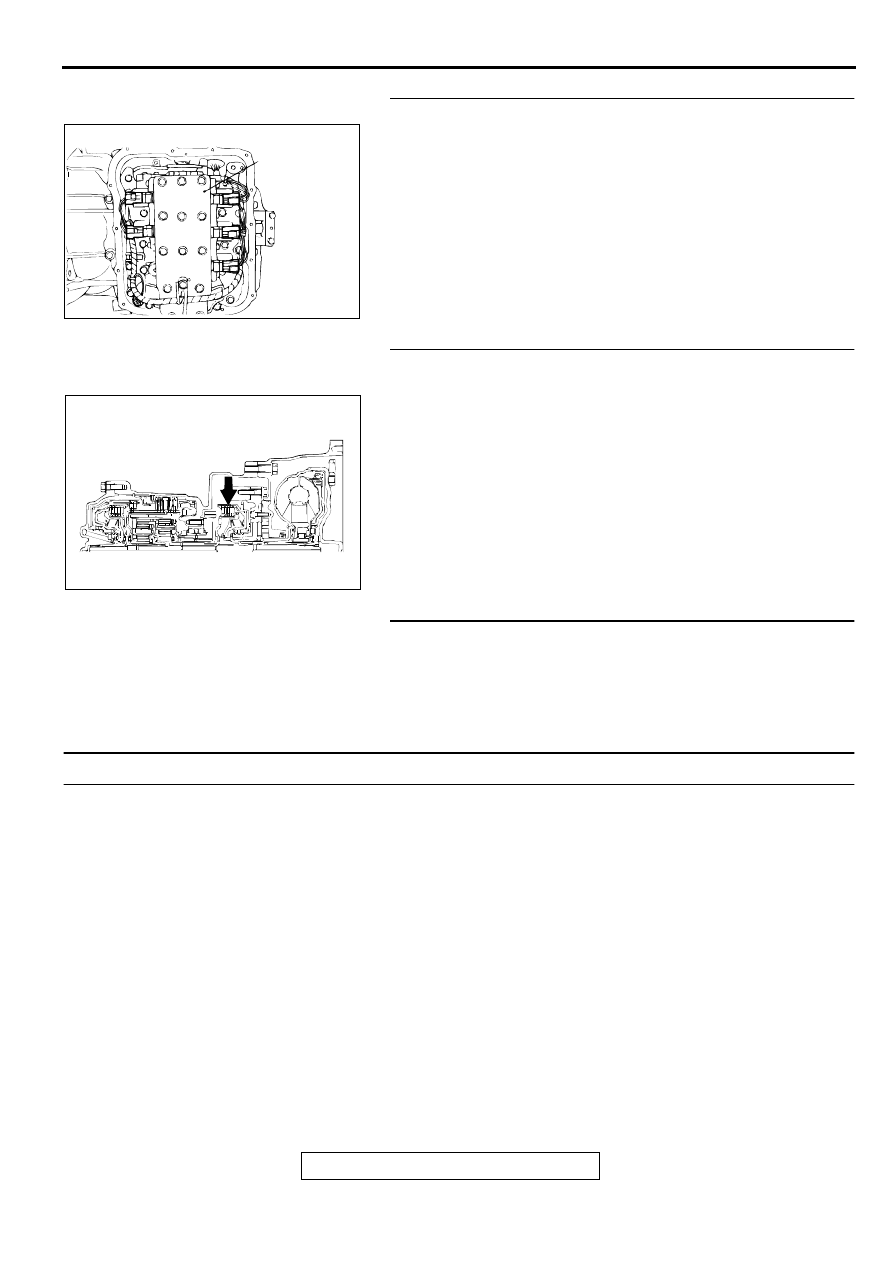Mitsubishi Eclipse / Eclipse Spyder (2000-2002). Service and repair manual - part 491

AUTOMATIC TRANSAXLE DIAGNOSIS
TSB Revision
AUTOMATIC TRANSAXLE
23A-256
STEP 4. Disassemble and clean the valve body.
Check the O-ring installation bolts for looseness and valve
body for damage. Repair or replace the faulty parts. Refer to
GROUP 23B, Valve Body
.
Q: Is the repair possible and the symptom eliminated?
YES : Diagnosis is complete.
NO : Replace the valve body assembly. Then check the
symptom. If the symptom is not eliminated, go to Step
6.
STEP 5. Check the underdrive clutch.
(1) Remove the transaxle assembly.
(2) Check the facing for seizure and the piston seal ring for
damage and interference with the retainer. Repair or
replace the faulty parts. Refer to GROUP 23B, Underdrive
Clutch and Input Shaft
. Then check the symptom.
Q: Is the symptom eliminated?
YES : Diagnosis is complete.
NO : Go to Step 6.
STEP 6. Replace the PCM.
Q: Is the symptom eliminated?
YES : Diagnosis is complete.
NO : Start over at Step 1.
INSPECTION PROCEDURE 3: Does not Move Backward
COMMENT
If the vehicle does not backward when the selector
lever is shifted from "N" to "R" range while the engine
is idling, the cause is probably abnormal pressure or
a malfunction of the reverse clutch, low-reverse
brake, or valve body.
TROUBLESHOOTING HINTS (The most likely
causes for this case:)
•
Abnormal reverse clutch pressure
•
Abnormal low-reverse brake pressure
•
Malfunction of the low-reverse solenoid valve
•
Malfunction of the reverse clutch
•
Malfunction of the low-reverse brake
•
Malfunction of the valve body
•
Malfunction of the PCM
DIAGNOSIS
REQUIRED SPECIAL TOOL:
MB991502: Scan Tool (MUT-II)
AC001860 AB
VALVE
BODY
ASSEMBLY
AC001861